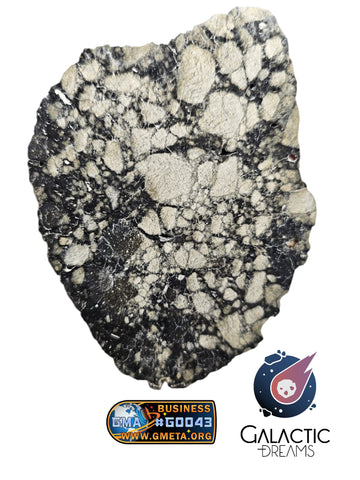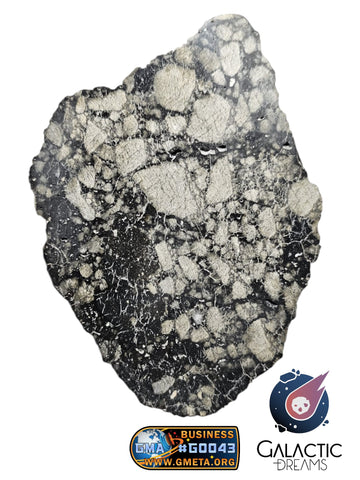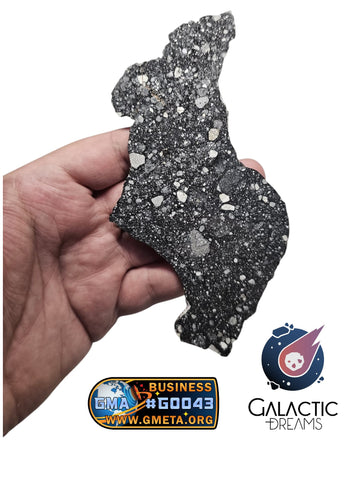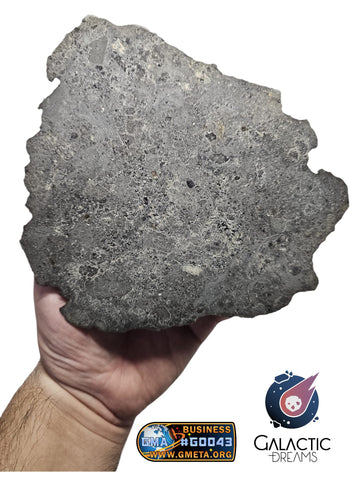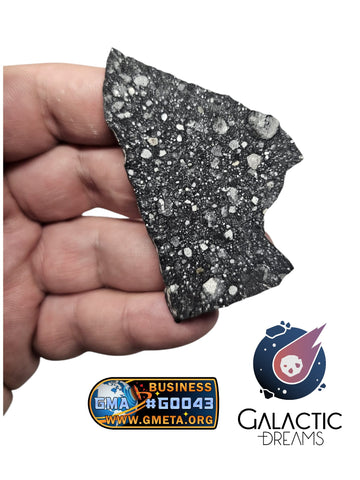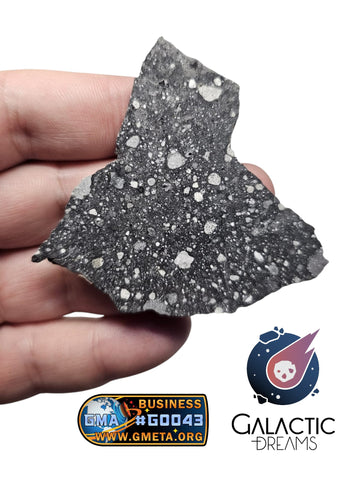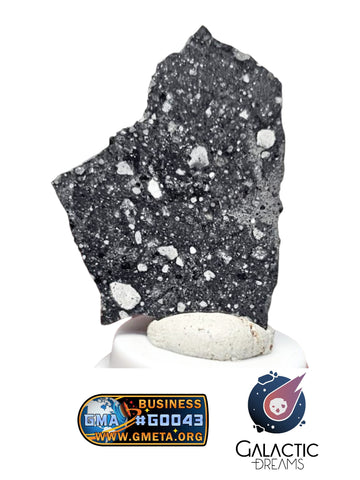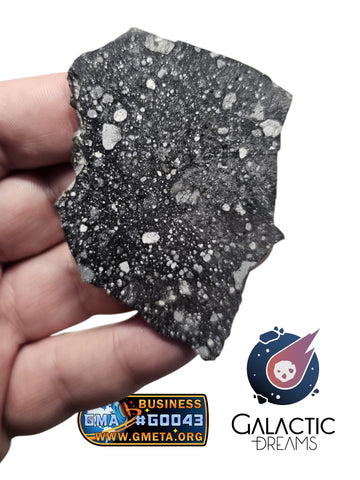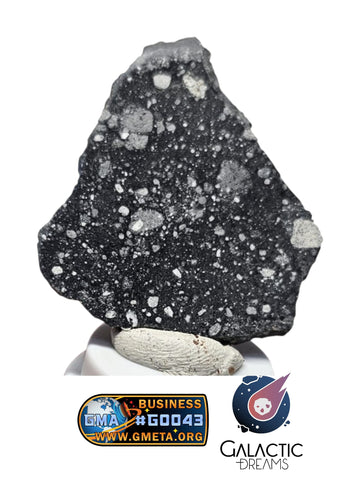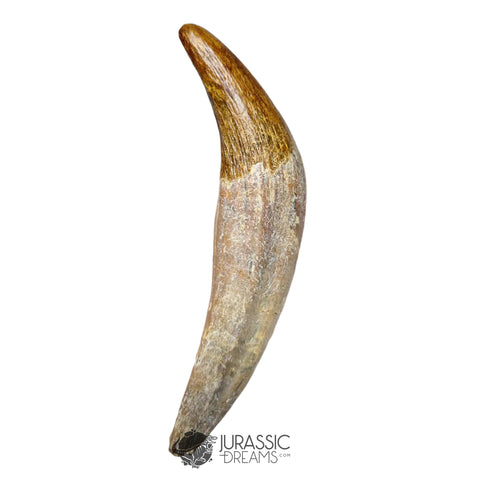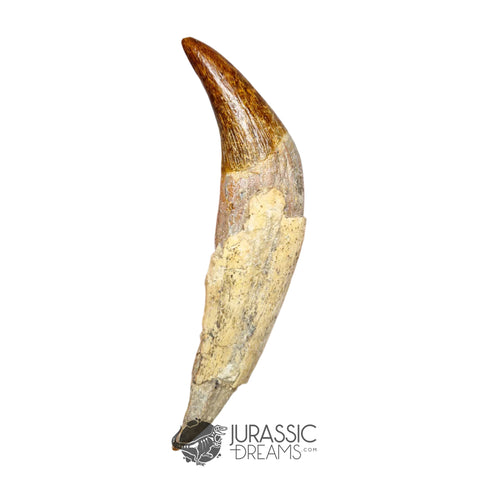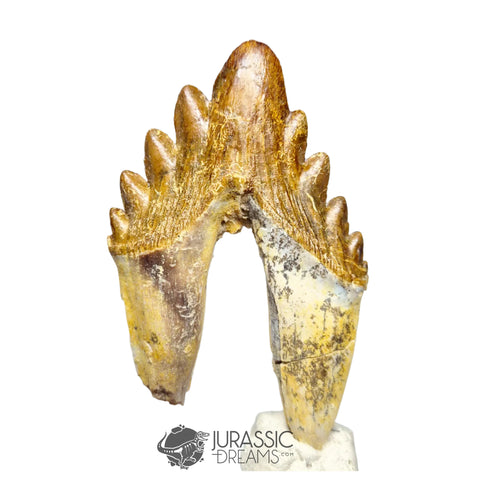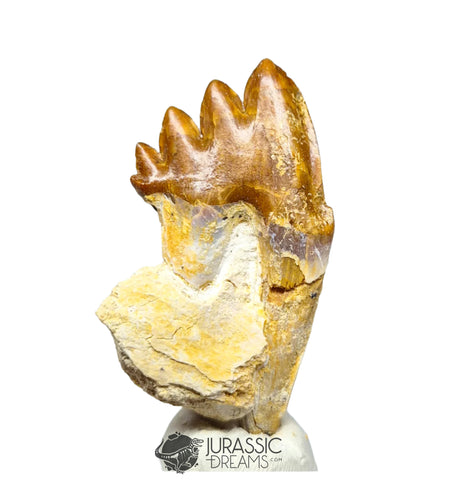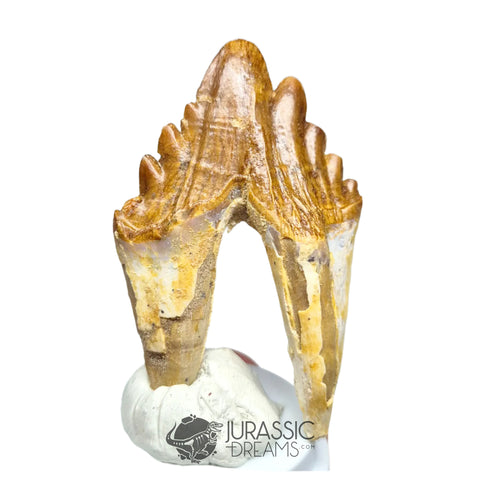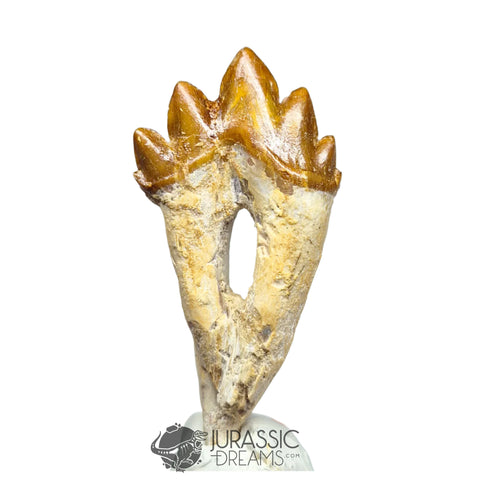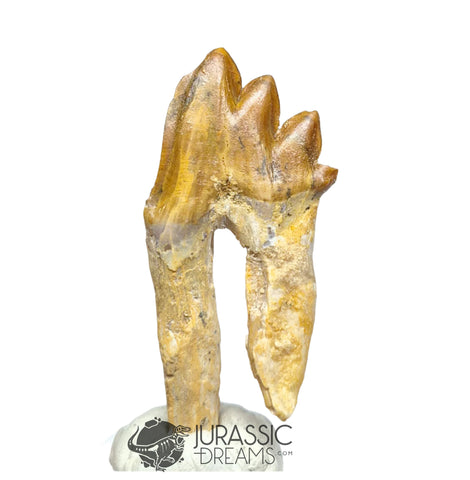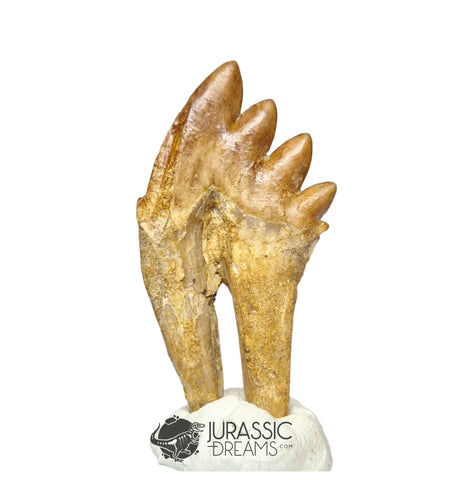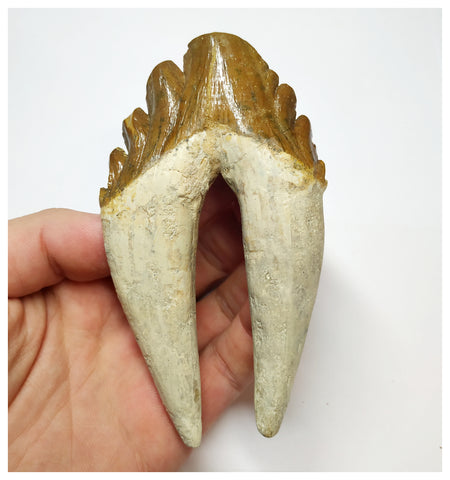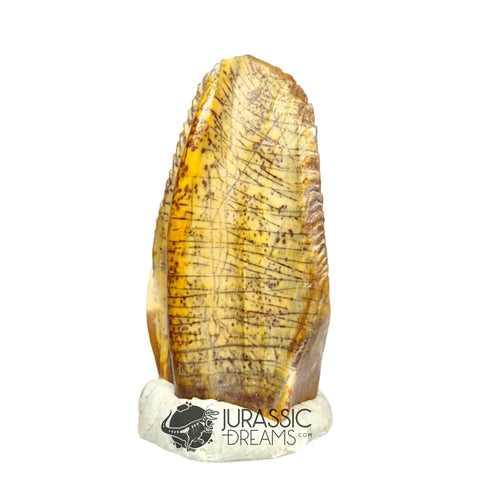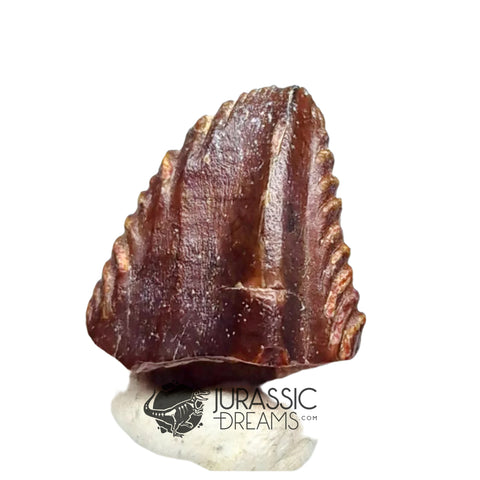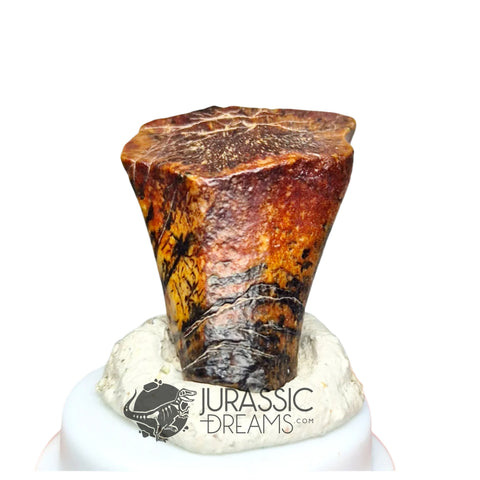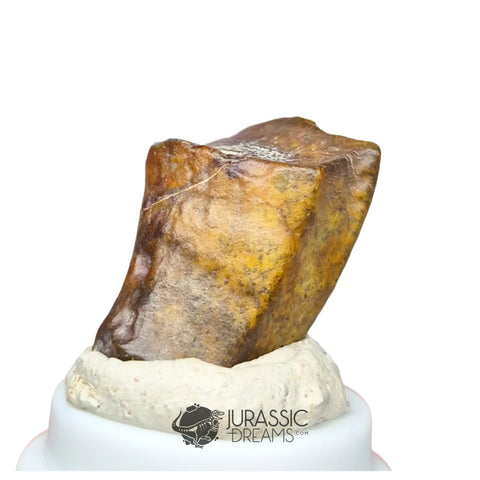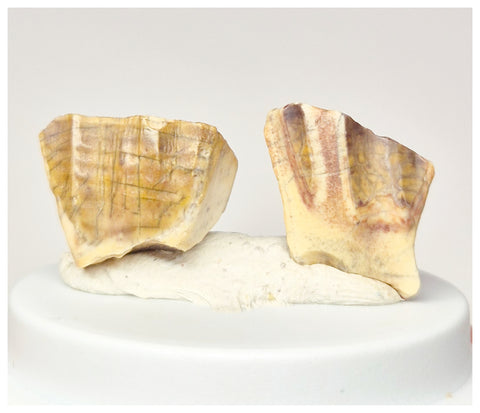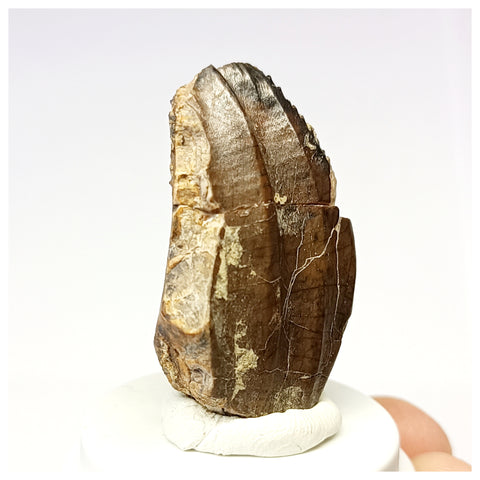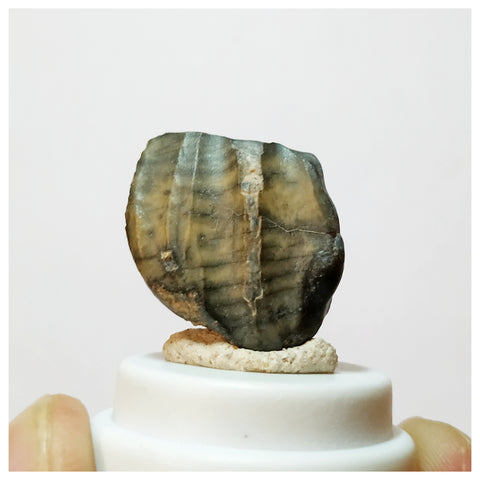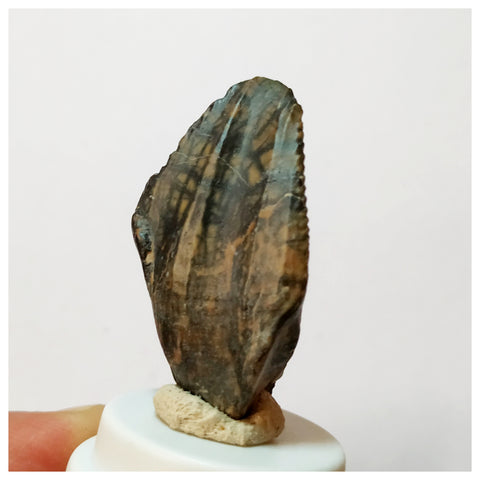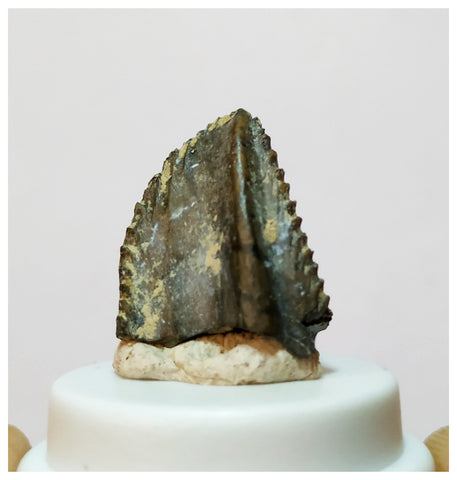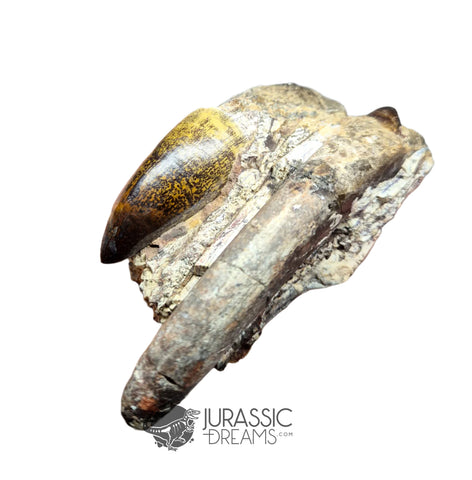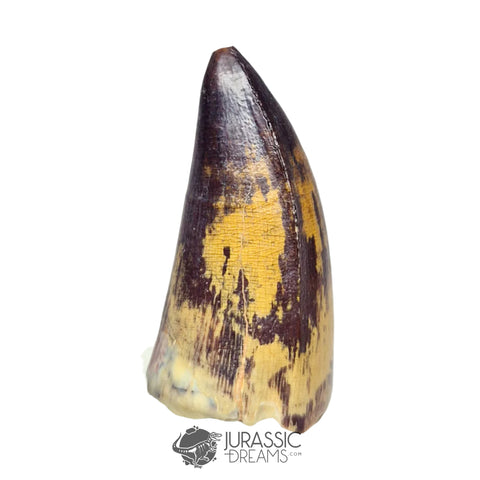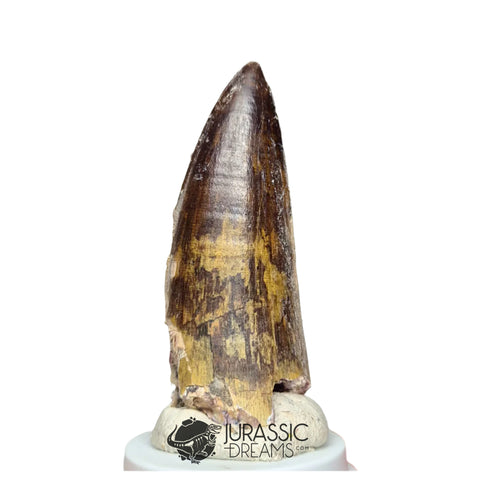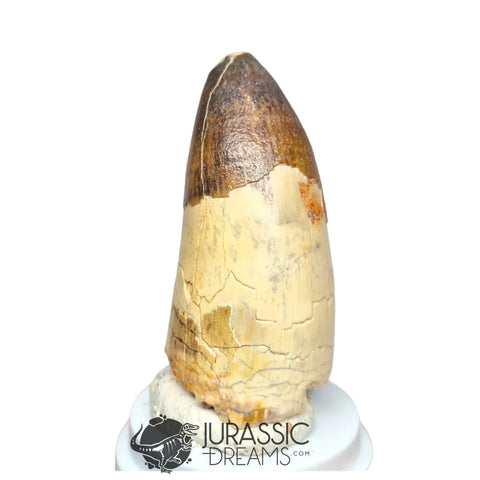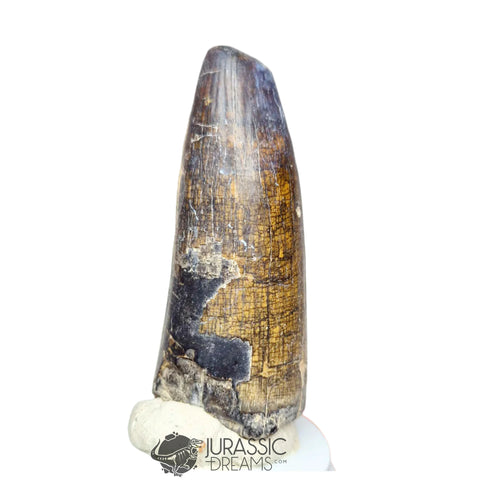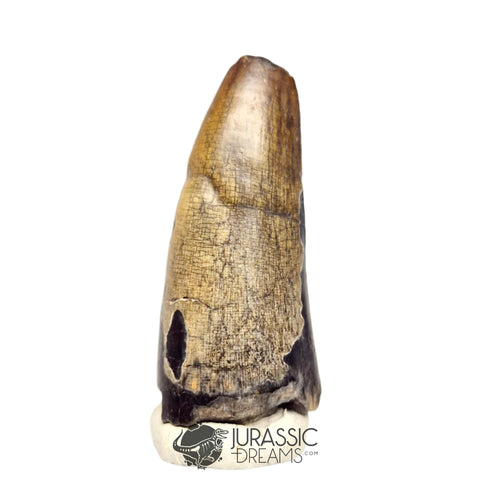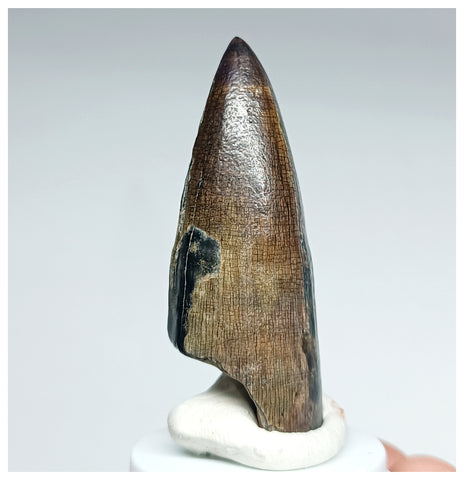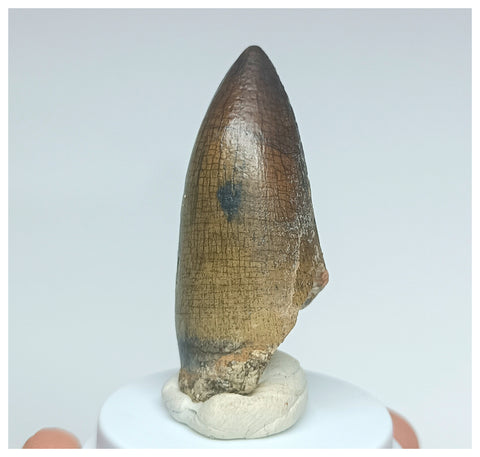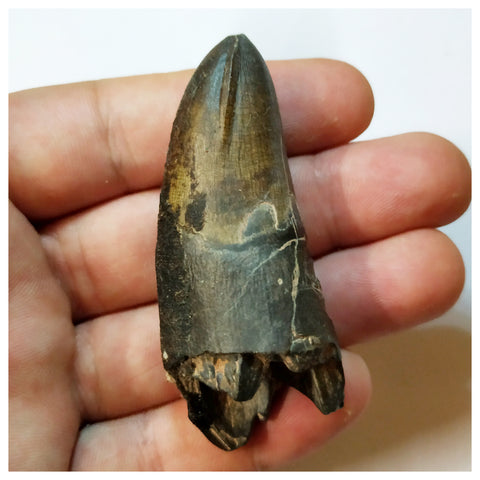Fantastic and very rare teeth of this North African sauropod species. The sauropod teeth are very scarce in these quarries. The unique dentition features of this Diplodocoid can be seen in a well defined and clear way, such as the distinctive chisel shape of this sauropod.
Size: 23.5mm = 0.92 Inch / 21.6mm = 0.85 Inch / 22.7mm = 0.89Inch
The teeth and bones with strong and vivid fossilization colors such as red, orange and black come from small paleochannels composed by thin layers, in the intermediate and upper stratigraphic levels (Red Sandstone Beds), from the Aoufous and Ifezouane Formations (Kem Kem Basin, South of Morocco).
The lithology of this body of sediment is characterized by the dominance of sandstones (also known as arenites) and fluvial gravel, of siliceous nature. Sometimes large concentrations of iron oxide are present, and then a small sample of that is usually present at the base of the tooth.
These mineralizations are responsible for the wide range of beautiful reddish color tones, slowly drawn during millions of years via fossil-diagenetic processes. The complicated sedimentarian architecture of the layers where most large vertebrates are found makes the excavation methodology a real challenge. Sometimes the local miners have to excavate long tunnels that follow the distribution of the fossiliferous layer. The dentition rests of sauropods are much scarcer in the fossil registry than the theropod teeth. One of the main reasons is their natural wear due to the vegetarian diet, which is strongly abrasive.
Rebbachisaurus teeth of this size and quality are especially rare among the cretaceous dinosaurs in the north of Africa. Rebbachisaurus is a genus of sauropod dinosaur of the superfamily Diplodocoidea, up to 20 metres (66 ft) long, that lived during the Early–Late Cretaceous period in Africa about 99-100 million years ago.
This massive four-legged plant-eating animal had a small head, a long, graceful neck and a whiplike tail. Rebbachisaurus is distinguished from other sauropods by its unusually tall, ridged back. The discovery of Rayososaurus, a South American sauropod nearly identical to Rebbachisaurus, supports the theory that there was still a land connection between Africa and South America during the Early Cretaceous, long after it was commonly thought the two continents had separated. [This last paragraph is from Wikipedia - License: Attribution-ShareAlike 3.0 Unported]
This species was described by Lavocat (1954). Full reference: (R. Lavocat. 1954. Sur les dinosauriens du Continental Intercalaire des Kem-Kem de la Daoura [On the dinosaurs from the Continental Intercalaire of the Kem Kem of the Doura]. Congrés Géologique International, Comptes Rendus de la Dix-Neuvième Session, Section 13 15:65-68) Type specimen: MNHN-MRS 1476-77, 1491, 1728, 1957-58, 1979, 1980-88, 1990-2002, a partial skeleton. Its type locality is Gara Sba, which is in a Cenomanian terrestrial claystone in the Ifezouane Formation of Morocco.
There have been many studies on this sauropod, however, there is still a lot to be discovered about this ground dwelling herbivore. Some of these studies are: Apesteguía 2005, Apesteguía 2007, Bonaparte 1999, Calvo and Salgado 1995, Calvo and Salgado 1996, Cavin et al. 2010,Charroud and Fedan 1992, Dalla Vecchia 2005, Gallina et al. 2002, Gallina and Apesteguía 2005, Haluza et al. 2012, Ibiricu et al. 2012, Lapparent 1957, Lavocat 1954, Mannion 2009, Marty et al. 2010, McIntosh 1990, Medeiros and Schultz 2004, Mocho et al. 2014, Monbaron 1979, Monbaron 1983, Paul 1988, Russell 1996, Salgado 1999, Steel 1970, Taylor and Naish 2005, Upchurch et al. 2004, Wilson 2002 and Wilson and Sereno 1998.
The quarries in the red and yellow fossiliferous levels with sands are gravels (Aoufous Fm e Ifezouane Fm) are becoming more inaccessible and dangerous for the local miners. Therefore this type of teeth and bones are everyday more scarce. The teeth which are found on the surface in nearby sites have a bad preservation due to the abrasion that they suffer during its exposition to high temperatures and aggressive desert climate conditions. However, the teeth that are extracted from the depth of the mines are usually much better preserved.
The different Geological Formations that make up the orography of the Cretaceous in the South East of Morocco have been mostly treated in an undifferentiated and not too accurate way by collectors, by Paleontology aficionados and by fossil dealers. Historically, fossils dealers from all around the world have identified the dinosaur pieces from this sector as belonging to the Tegana Formation.
However, in a formal way, most of the last published studies refer to other nomenclature in the description of the units and formations of the Lower and Upper Cretaceous. That's why next we include an interesting link where the Aoufous Formation and the Ifezouane Formation are described, making reference to their age, geological history, sedimentology, stratigraphy and vertebrate assemblage. It includes a brief explanation of the stratigraphic concepts that have been established formally until today in the studies of this sector of Morocco.
This way, the precise stratigraphic understanding of the origin of the rests, as well as the sedimentological analysis, enables a better paleoecologic characterization of the environments where this amazing dinosaur assemblage lived.
Link: Aoufous Formation









